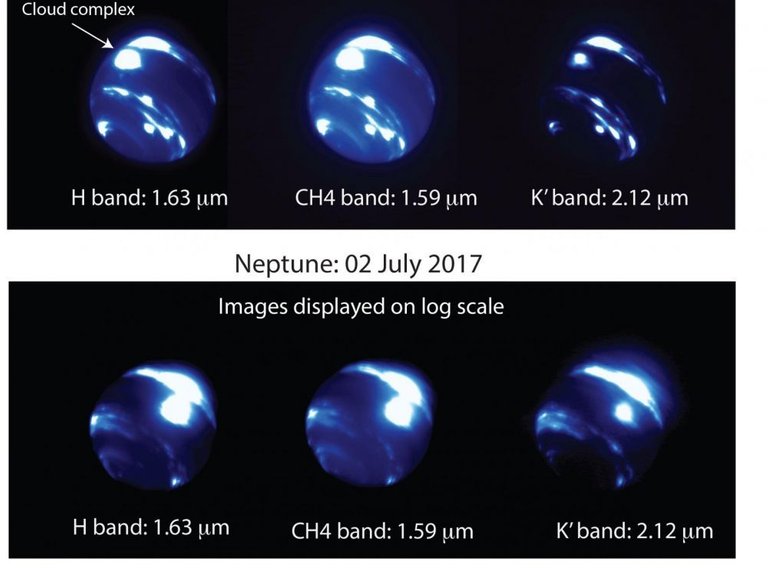A cloudy complex identified on twilight observations with the Keck telescope in Hawaii, is nearly 9,000 kilometers in diameter, nearly 30% of the surface of Neptune, the last giant in the solar system. Besides the size of this gigantic storm, it is its location that interrogates astronomers. Its outer edge is in fact very close to the equator whereas usually these atmospheric phenomena are rather observed near the poles, like this vortex identified in 2016 by the Hubble telescope, which was as big as the surface of the United States.
The storm on Neptune has considerably increased in size in months of a month.

The Neptune specialists do not yet explain the presence of these clouds in this place, they assume the presence of a vortex in the low atmosphere or the existence of a seasonal phenomenon renewing itself every few decades. On Neptune, this type of meteorological artefact evolves in fact in a few years, contrary to what happens on Jupiter and its Great red spot, which is the place of a storm that lasts for several centuries. Neptune is the windiest planet in our solar system, with the fastest winds blowing towards the equator at nearly 1000 km / h. Understanding the atmospheric phenomena that prevail on Neptune is very important for astrophysicists studying exoplanets. Many of those that have been discovered are of the size of Neptune and some results obtained can help them to study these distant worlds.